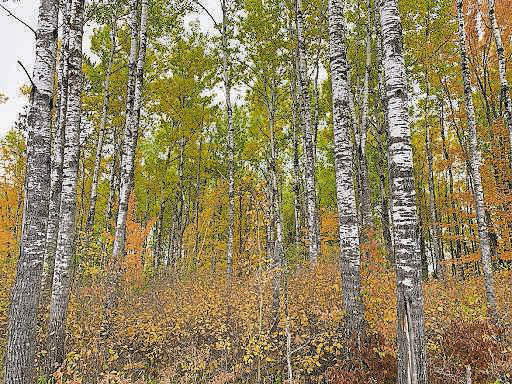If you’re like most private forest landowners, you probably want to improve wildlife habitat. This is one of the most common goals that landowners have, but some of them want to improve the habitat specifically for birds. So, what does forest bird habitat look like? Is any forest good for all birds or is there one forest that’s better than another? The answer is “it depends!”
Not every forest can provide for every bird species in Michigan. Forest bird habitat is as unique as every forest type in the state. You’re likely to find an Ovenbird in a northern hardwood forest, but not likely in a sandy jack pine forest. Conversely, you won’t find a Kirtland’s warbler, which likes young jack pine, in older northern hardwood stands. This is because every bird species has their own needs and preferences in their habitat, which makes improving bird habitat more of a challenge than someone might think. Ovenbirds need forests with thick deciduous leaf litter to make nests in while Kirtland’s warblers need thick jack pine to nest under the intertwined branches.
Another example is the Golden-winged warbler, which has specific Best Management Practices developed through years of research. This bird requires young deciduous forests, typically aspen or tag alder clearcuts, that have 5 to 15 trees per acre that are 9-inches in diameter or greater left in the clearcut, but also has a thick herbaceous layer of grasses and forbs. They use the remaining trees as singing perches and the grasses to nest in. Additionally, this young forest area should be next to an older deciduous forest, because once the chicks have hatched, they use that older forest for finding food to prepare for the fall migration southward.
Not every bird will have that detailed criteria for what their habitat should look like. There are many common birds, like Blue Jays and Robins, that are generalists and can survive in a wide variety of forest types. Overall, bird habitat can mean a lot of things and this article barely scratches the surface of it. If you’re wondering how you can best improve bird habitat on your property, your first step is to consider what forest type you have, which will help narrow down what birds you’ll have around and what management you can do.
If you want to learn more about how you can manage your forest property for bird habitat, check out the Forestry for Michigan Birds program on Michiganaudubon.org. You’ll be able to find a lot more information about the 20 priority bird species and what habitat features are important to forest birds. You can also reach out to your local Conservation Districts to learn about the available technical and financial resources to help manage your forest bird habitat.
